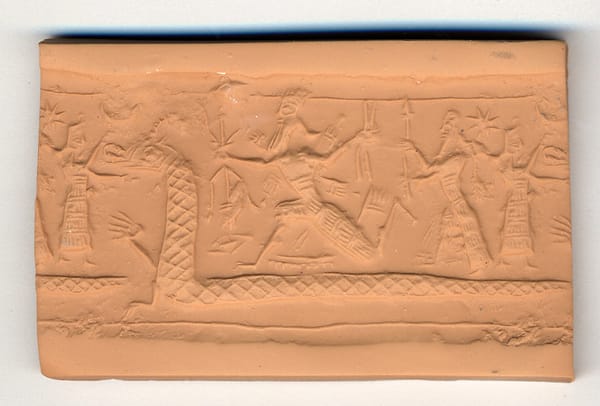Heartbroken Delicacies

The fantasy heartbreaker as a term has been thoroughly reclaimed by intrepid creators who just want to put some of their skin into the game. I have an unreasonable fondness for these endeavours, drawn by their modest glimmers, and pin them in my gaming folder of shame. Akin to insecta they are macroscopically of similar form and easily overlooked, yet there is a quiet joy in the discerning appreciation of each. Let's take a spell to rummage about, pull some out, and see what feature catches our eyes?
Hit Dice from DURF by Emiel Boven
Each time a creature receives Wounds they roll their Hit Dice (HD). Each HD is a d6. If the result is less than or equal to the Wounds they have accumulated the creature dies.
Attacks are opposed STR or DEX rolls, and on a hit deal a fixed 2-5 damage accumulated as Wounds. This flips the script as now the HD are actively rolled (retrospectively justifying the term Hit Dice), and probabilistically even low damage repeated hits are hazardous.
Bonds from FLEE by Emmy Verte
An exile may form Bonds. Those can be people your exile has met, or places in sanctuaries they have visited. Older bonds have more power. Bonds let you remove burdens from an exile, which are transferred onto the bond. Bonds can also be permanently removed in order to substitute a supply die in a throne (GM) roll.
Substituting a supply die in a GM roll is a form of player-facing meta-currency driven dice manipulation, and the GM is given authority to state how the person or place is changed. This is perhaps the pithiest sticky take on a bonds mechanic I have seen, and I have found in other games this is a key driver of player investment in the setting.
Starting d6 HP as Class from Bastards by Micah Anderson
When you roll the d6 for your starting HP, consult this list: 1 HP: wizard... 2 HP: cleric... 3 HP: thief... 4 HP: assassin... 5 HP: fighter... 6 HP: barbarian.
Wonderfully simple, practically beating Electric Bastionland by Chris McDowall with its two tables of gear per starting package indexed by d6 HP and d6 New Pounds (£). Most days I wake on the wrong side of the bed, and can't see the point of randomising ability scores in class and level games, and this presents the slip-streamed alternative of directly rolling d6 for HP and class and within that d6 for starting wealth and gear package.
Class & Race from A Dragon Game by Chris Bissette
CLASS
You’re an adventurer.
RACE
No.
I certainly don't hold it against anyone, but I seldom find the appeal in dissecting the inhabitants of our fantastical little worlds up into quasi-human races / species / kindred / ancestries and granting them 'ribbon' abilities that need to avoid pulling focus from the rest of character differentiation. This is the plainest statement I've seen of how I have come to play recently - an elegant sufficiency.
Armour Degradation from The Vanilla Game by Jared Sinclair
When an incoming attack roll is equal to or less than your AC (and therefore misses), lower your armour's current AC by 1. While in a settlement, damaged armour can be repaired by a blacksmith... If your armour's AC ever reaches 0, it's permanently broken and cannot be repaired.
TVG is a blackjack-style roll-high-under wotsit, so this has a pleasingly non-linear curve of expected value per point of AC. After watching some of the videos on the Youtube channel Tod's Workshop, I am compelled that representing armour as ablation (additional HP or otherwise degrading protection) has traction, and this is my favourite implementation among the 'roll to see if you get to roll for real' ie. roll to hit games.
Seeing & Being Seen from Revolution Comes to the Kingdom by Thomas McGrenery
To a person or creature who is trying not to be seen and is in a place that might conceal them, spend an action to look at that place and initiate a contest of SKILL.
To see an object that may be concealed, look at the place and test your SKILL. Do the same to spot a person or creature who might be hidden but isn't actively trying to hide.
To observe a person or object in a place where they are not hidden, simply look in that place. This takes one action, if the initiative deck is in play.
Initiative and combat stealth/perception rules are often unwieldy, as I brought up in my last post, yet RCTK really needs this to work given the subject of guerilla resistance of occupied country. It combines the above straightforward rules of thumb for stealth with the random card-based initiative of Troika! by Daniel Sell. Spending your action in D&D 5E to try Perception on someone who is hiding is a mug's game, but in RCTK when you each might get two, one or no actions each round. This facilitates the anticipated cat-and-mouse play, and presents the stochastic action as due to vagaries of opportunity and circumstance more than slapstick ineptitude. As a bonus, it also has better contested rolls than many of its low-rolling peers, as its brethren often have inadvertently quirky probabilities from the Orwellian: roll low good, roll high bad:
When two or more characters vie for supremacy, it is a contest of SKILL or STRENGTH. Both players roll 1d20 to test their SKILL or STRENGTH as appropriate: the winner of the contest is the character who has the highest successful die roll. If both roll the same number, the contest is not yet resolved. If both fail, highest number wins.
RELIC by Scott Wegener & Zac Bir
No single feature stands out so much as how the whole composition reifies the often bewildering yet glorious train-wreck of bricolage that is the GLOG into a single, readable text.
Here endeth the lesson. What heartbreakers (taking the term loosely) do you have a fondness for but I did I not mention, and what singular delicacy would you bring for show-and-tell?




